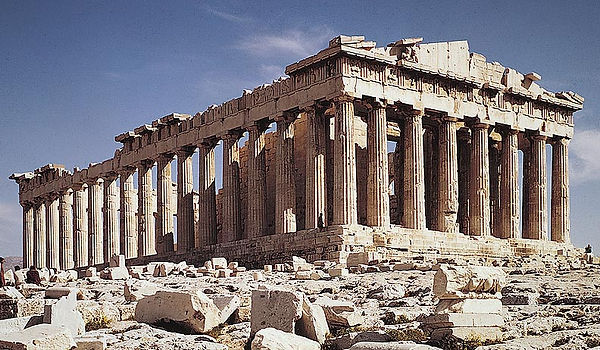Discovering History
History with Ms. Sabatos
Ancient Art
Lascaux Cave
c. 15,000 BCE

Created during the Paleolithic period, Lascaux cave was accidentally discovered by teenage boys hunting. The cave depicts many animals and one stick figure human - curious there is only one human depicted in the entire cave. Using chewed rocks and sediments, the artists used hollowed bones to blow the made paint onto the cave walls.
Resources for Lascaux Cave Web Quest
Stonehenge
c. 3100-2500 BCE

The enigmatic monument in the south of England raises many questions about society 4,000 years ago. How was this monument used? Why was it built? How were the stones put in place? While some answers can be speculated, many do not have a definitive answer. It is know the monument was built in phases. To discover more, visit the English heritage website linked to the title!
Pyramids of Giza
c. 2500 BCE

Similar to Stonehenge, the building of the great pyramids is a mystery. Egyptian culture focused on the necessity to ensure they were taken to the afterlife, especially their pharaohs. The pyramids were built for two main reasons: to venerate the gods and to house the pharaoh's body and help him or her safely get to the afterlife. A costly venture, this society found the pyramids important structure to build! Tour one by clicking the title!
Kouros Boy
c. 590 BCE

Kritios Boy
c. 480 BCE

Laccoon and His Sons
c. 1st century BCE

These two sculptures originate in Greece only 100 years apart. Their body positioning, facial features, and sculpting definition set the two sculptures apart and show a strong evolution of Greek art. Both free standing, the Kouros boy stands stiffly - hands by his side, one step forward with weight on both feet. The Kritios boy stands more fluidly, one leg bent, making one hip higher than the other, creating an "s" curve to his body (contrapposto!). The muscular torso of the Kritios boy is more defined, as are the curves of his body, making the sculpture more realistic. In addition, his face, more plump and realistic than the Kouros Boy, contains a small smile and gaze adding to the realism of the artwork. While there is a difference in their physical appearance, sculptures from both times were meant to venerate athletes and gods, as these two do.
Laocoon and His Sons tells the story of a priest who, in good faith of his own home, warned Trojans against the Greeks and paid for the warning with attacks from the Greek gods. This Hellenistic sculpture shows a great amount of emotion, in the faces of the figures and the physical struggle of the father and sons. The diagonal line through the sculpture emphasized the motions of the figures. Muscles are much more defined that the Kirtion or Kouros boy, adding to the definition of the bodies and the clear struggle occurring in the scene.
Venus de Milo
c. 125 BCE

Venus de Milo is a Hellenistic sculpture, The figure is in an extreme contrapposto, which helps to define it as the later period of sculpting in Greece. Her left knee juts out much farther than anticipated, and her body is heavily leaning towards one side.
Greek architecture resources:
1. http://www.ancientgreece.co.uk/acropolis/challenge/cha_set.html
2. https://www.khanacademy.org/humanities/ancient-art-civilizations/greek-art/beginners-guide-greece/a/introduction-to-greek-architecture
3. http://www.ancient.eu/Greek_Architecture/
4. http://www.timetrips.co.uk/parthenon.htm
5. https://www.thedailybeast.com/virgin-sacrifice-and-the-meaning-of-the-parthenon
Parthenon
c. 450 BCE

Architecture Vocab


Roman Emperors
Which Roman Emperor are you? Quiz
1. Please take the quiz above and read about the emperor you have identified with (click on "Find out more"). Take a few notes: how did they rule? What were their accomplishments? Did people like them?
2. Go to the Emperor Game and choose your emperor. Play - can you make the same decisions as he would?
3. Research to find a statue or carving of them. Write down the title, approximate date, and the website you found it on. Then write 10 observations of the statue of your emperor!
4. Why would your emperor want to be viewed in this way? What does the statue do for their rule?
5. How do the Romans' statues differ from the Greeks? Think about their use, their appearance, their purpose...